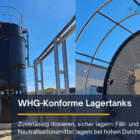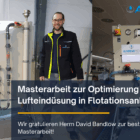Breweries not only produce beer, but also considerable quantities of wastewater. This wastewater has a complex composition, ranging from organic substances such as sugar and starch to cleaning agents and solids. Efficient treatment of this wastewater is essential to comply with environmental regulations, reduce operating costs and use water resources sustainably. Biogas plants, biofiltration and reverse osmosis play a key role here, particularly in energy generation and water recycling.
Table of contents
Origin of wastewater in the brewing process
The brewing process is complex and comprises several stages, each of which generates specific wastewater streams. These wastewaters vary in quantity, composition and pollution and require differentiated treatment approaches.
1. malt processing
- Soaking and sprouting:
- During the production of malt, the grain is soaked and germinated, resulting in waste water with organic residues such as starch, sugar and germ buds.
- Load: High COD and BOD due to organic substances.
- Darren:
- Condensate from the kilning of malt contains volatile organic compounds and requires pre-treatment before it can be discharged or recycled.
2. mashing
- Residues from the mash:
- When malt and water are mixed to release sugars and enzymes, waste water containing dissolved organic compounds such as starch, proteins and polyphenols is produced.
- Load: High COD and fine solids.
3. wort boiling
- Condensates from the wort boiler:
- The evaporation process to concentrate the wort produces vapor condensates that contain organic substances and volatile compounds such as alcohols.
- Load: Moderate COD and BOD; often reusable after treatment.
4. fermentation and storage
- Fermentation residues and yeast:
- During fermentation, sugar is converted into alcohol and CO₂. Excess yeast and dead cells end up in the waste water.
- Pollution: High content of biomass and dissolved organic compounds.
5. filtration and bottling
- Filtration residues:
- Beer filtration produces waste water with fine particles such as diatomaceous earth, cellulose or other filtration aids.
- Pollution: High concentration of suspended matter and moderate organic pollution.
- Filling:
- During the filling process, waste water is produced by cleaning bottles, cans and barrels. These contain cleaning agents, surfactants and residues of organic substances.
- Pollution: High proportion of chemicals and organic substances.
6. cleaning processes (CIP systems)
- Clean-in-Place (CIP):
- Cleaning water from tanks, pipes and machines contains residues of cleaning agents, surfactants, acids and alkalis.
- Load: Variable pH values and chemical concentrations.
7. ancillary processes
- Cooling and heating circuits:
- Waste water from the cooling circuits often contains mineral residues or biofouling.
- Heating circuits may have deposits or chemical residues from corrosion inhibitors.
Composition of the wastewater
Brewery wastewater comes from various process stages such as wort production, fermentation, bottling and cleaning processes. Typical properties are
- High COD (chemical oxygen demand): 2,000-5,000 mg/L, mainly due to organic substances such as sugar, starch and alcohol.
- Fluctuating wastewater volumes and compositions: Variable due to cleaning intervals and batch production.
- High proportion of solids: Spent grains, yeast and filtration residues.
- Cleaning agents: Surfactants, alkalis and acids from CIP (clean-in-place) systems.
Wastewater treatment with biogas plants
Biogas plants are an effective solution for treating highly organically contaminated brewery wastewater. They not only offer a reduction in organic substances, but also a sustainable way of generating energy.
How the biogas plants work
- Anaerobic processes:
- Microorganisms decompose organic substances in the absence of oxygen.
- End products: Biogas (methane and CO₂) and stabilized sludge.
- Procedure:
- UASB reactors (Upflow Anaerobic Sludge Blanket):
- Suitable for continuous streams with high COD.
- Build-up of granules that ensure high biological activity.
- UASB reactors (Upflow Anaerobic Sludge Blanket):
Advantages of biogas plants
- Energy generation:
- The methane from the biogas can be used in combined heat and power plants (CHP) to generate electricity and heat.
- Decentralized energy supply for the brewery.
- Reduction of COD: > 90 %.
- Cost savings: Reduction in waste disposal costs and reduction in energy costs.
Challenges
- Pre-treatment: Removal of solids such as spent grains and yeast to avoid overloading the system.
- Operational stability: Need for uniform feeding to avoid shock loads.
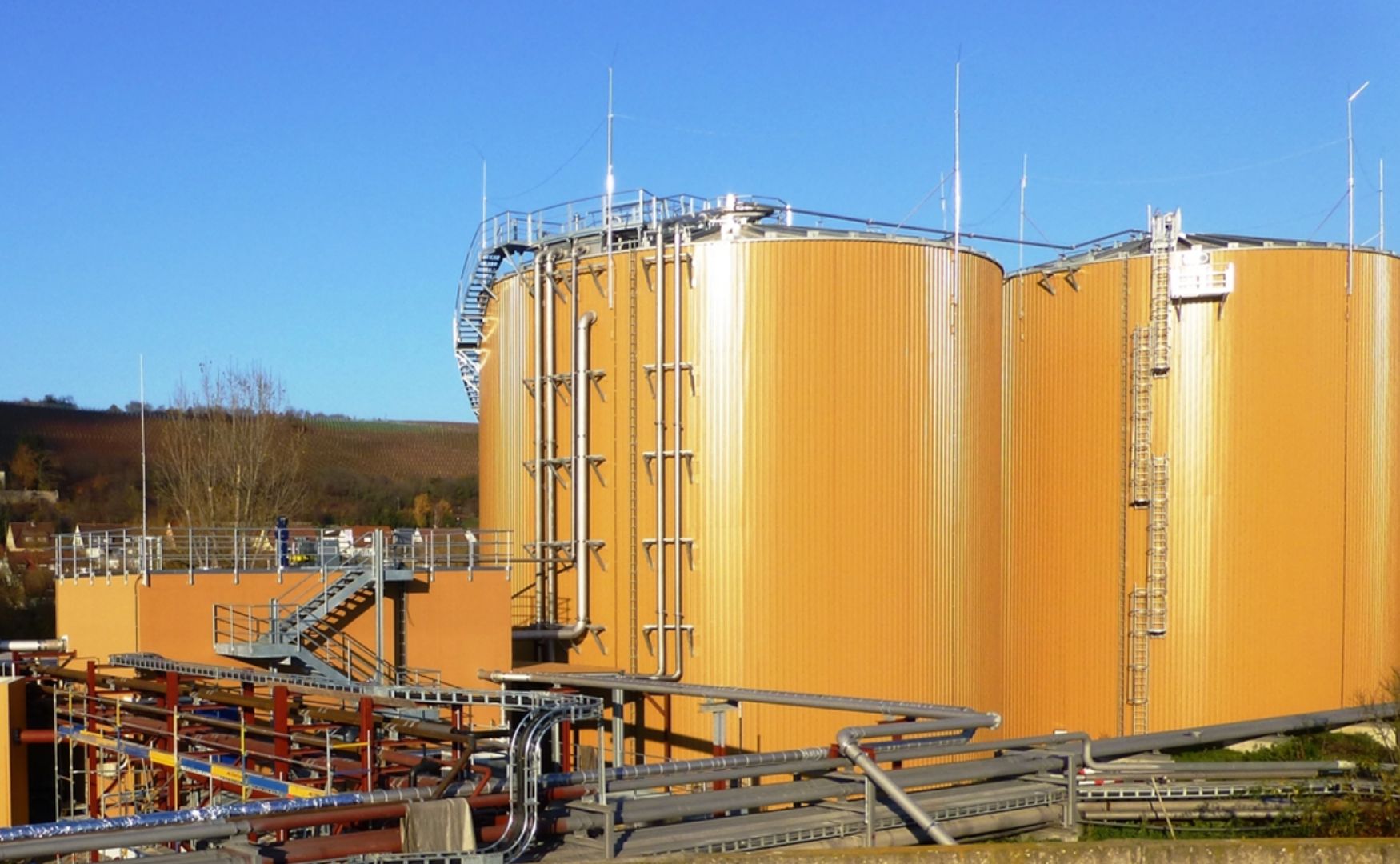
Photo: Our ALMA BHU GMR biogas plant for the treatment of waste water from the food industry
Neutralization systems: pH value control
Neutralization systems play a central role in the treatment of brewery wastewater, particularly due to the pH value fluctuations caused by cleaning processes.
Components and mode of operation
- Mixing and expansion tank:
- Ensure homogeneous mixing and compensate for hydraulic and chemical fluctuations.
- Dosing systems:
- Add acids (e.g. sulphuric acid) or alkalis (e.g. caustic soda) to adjust the pH value to a neutral range (6.5-8.5).
- Automation:
- Sensors continuously monitor the pH value and control systems precisely regulate the addition of chemicals.
Advantages of neutralization
- Protection of downstream stages: Biogas plants and biofiltration plants work more efficiently under stable pH conditions.
- Legal compliance: The pH value of the wastewater is kept within the discharge limits.
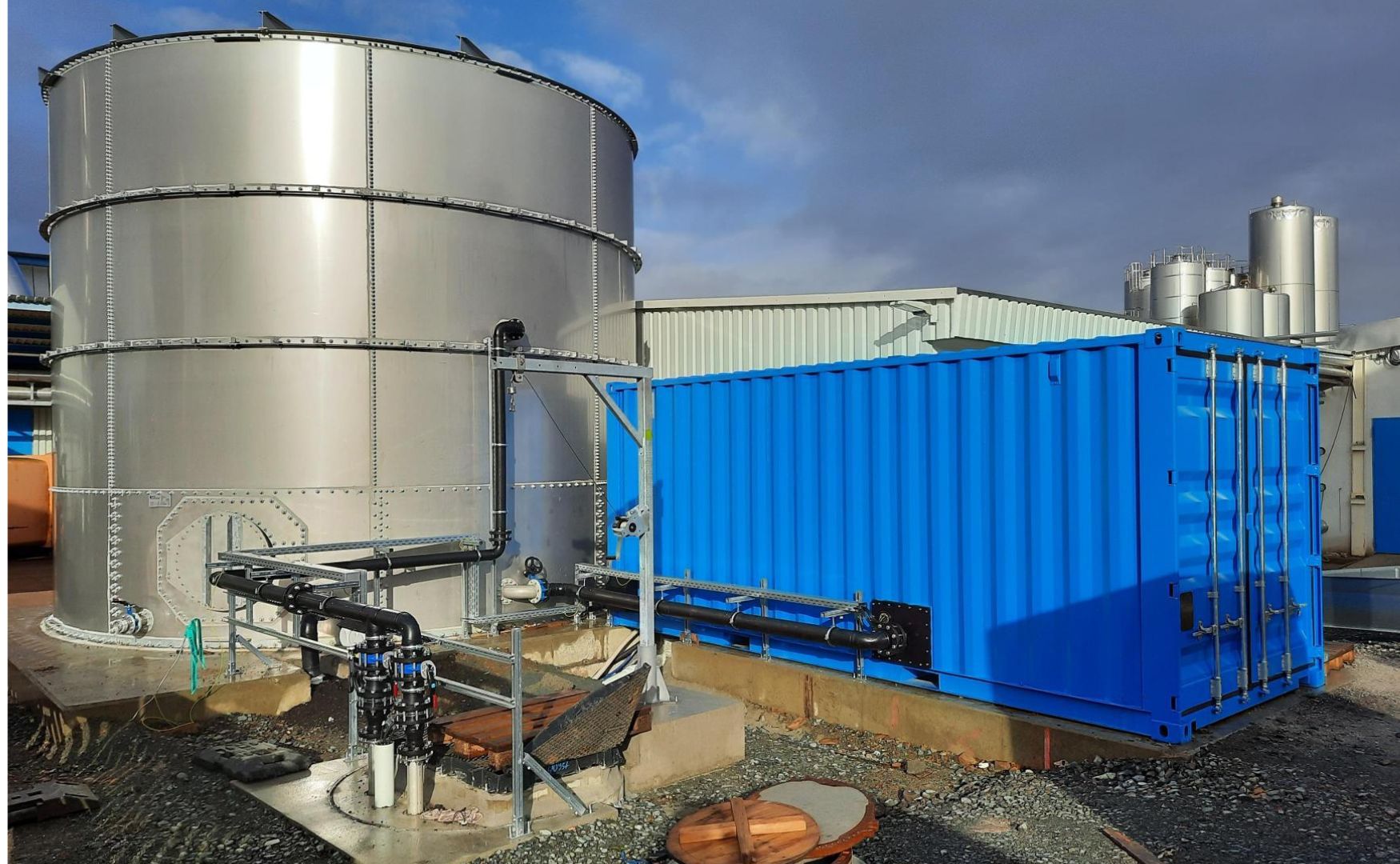
Photo: Our ALMA Neutra neutralization system with mixing and equalizing tank and automatic pH value control
Water recycling of vapor condensates by means of biofiltration and reverse osmosis
Vapor condensates in the brewery
Vapor condensates are mainly produced during the evaporation of water during wort boiling. These condensed vapors are a potential source for water recycling, but contain organic substances and volatile compounds that need to be treated.
Biofiltration as pre-treatment
Biofiltration is an effective method for the reduction of organic substances and for preparation for downstream membrane processes.
- Functionality:
- Biofiltration systems use a carrier material (e.g. sand, activated carbon) that is colonized with bioactive microorganisms.
- The microorganisms break down organic compounds and reduce COD and BOD.
- Application:
- Removal of volatile organic compounds (e.g. alcohols) and biodegradable substances.
- Protection of downstream reverse osmosis systems against fouling.
- Advantages:
- Chemical-free process.
- Reduction in operating costs for subsequent stages.
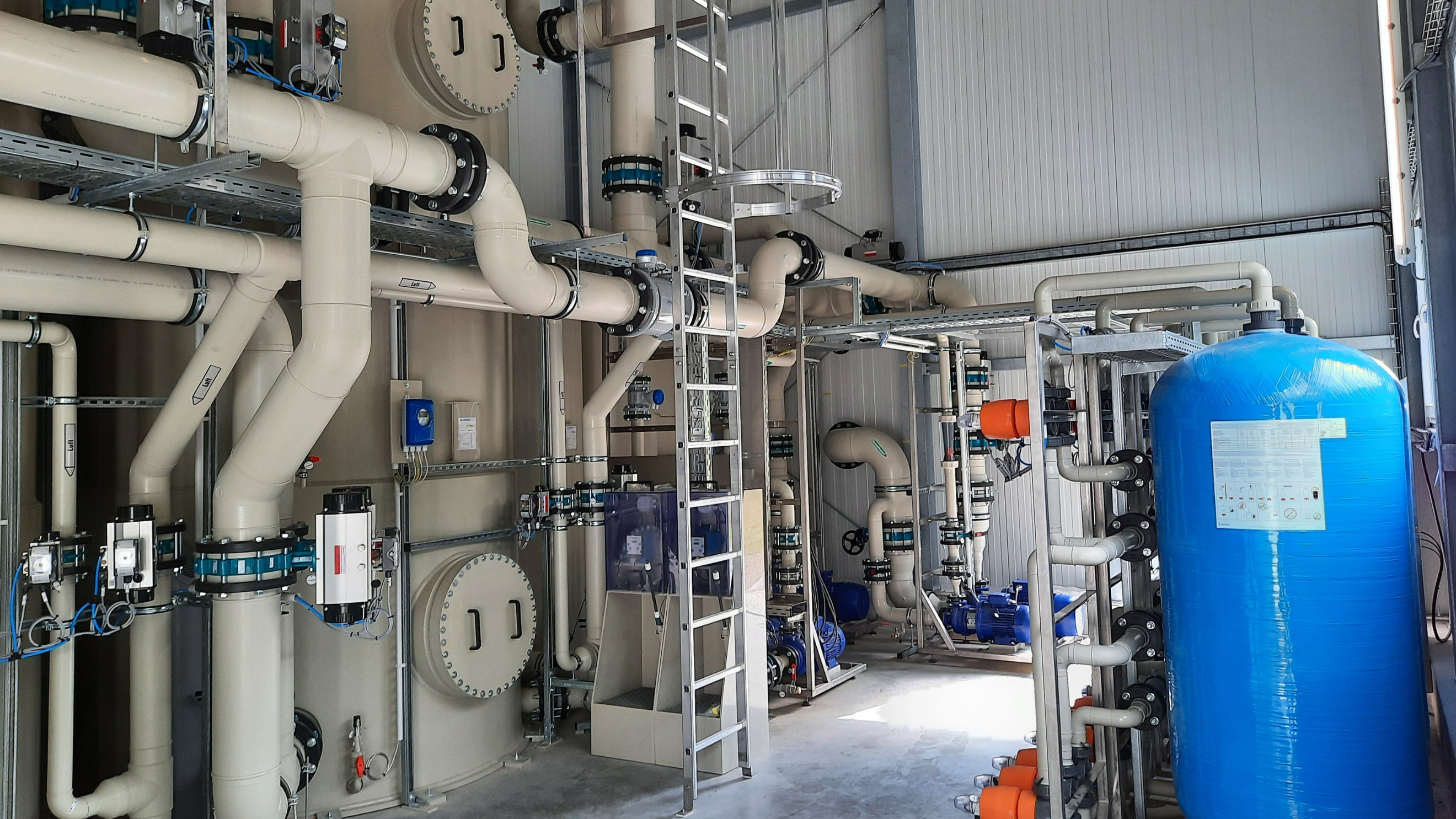
Photo: Our ALMA BioFil Compact biofiltration system for the treatment of vapor condensates
Reverse osmosis for cleaning water
After biofiltration, the water is further treated with reverse osmosis to remove dissolved substances and micropollutants.
- Functionality:
- The water is pressed through a semi-permeable membrane under high pressure.
- Retention of salts, organic substances and impurities.
- Application:
- Production of water for cleaning and production processes.
- Circulation of recycled water to reduce the amount of fresh water required.
- Advantages:
- High retention rates for dissolved substances.
- Wasser mit sehr niedriger Leitfähigkeit (< 10 µS/cm).
- Reduction of operating costs through water reuse.
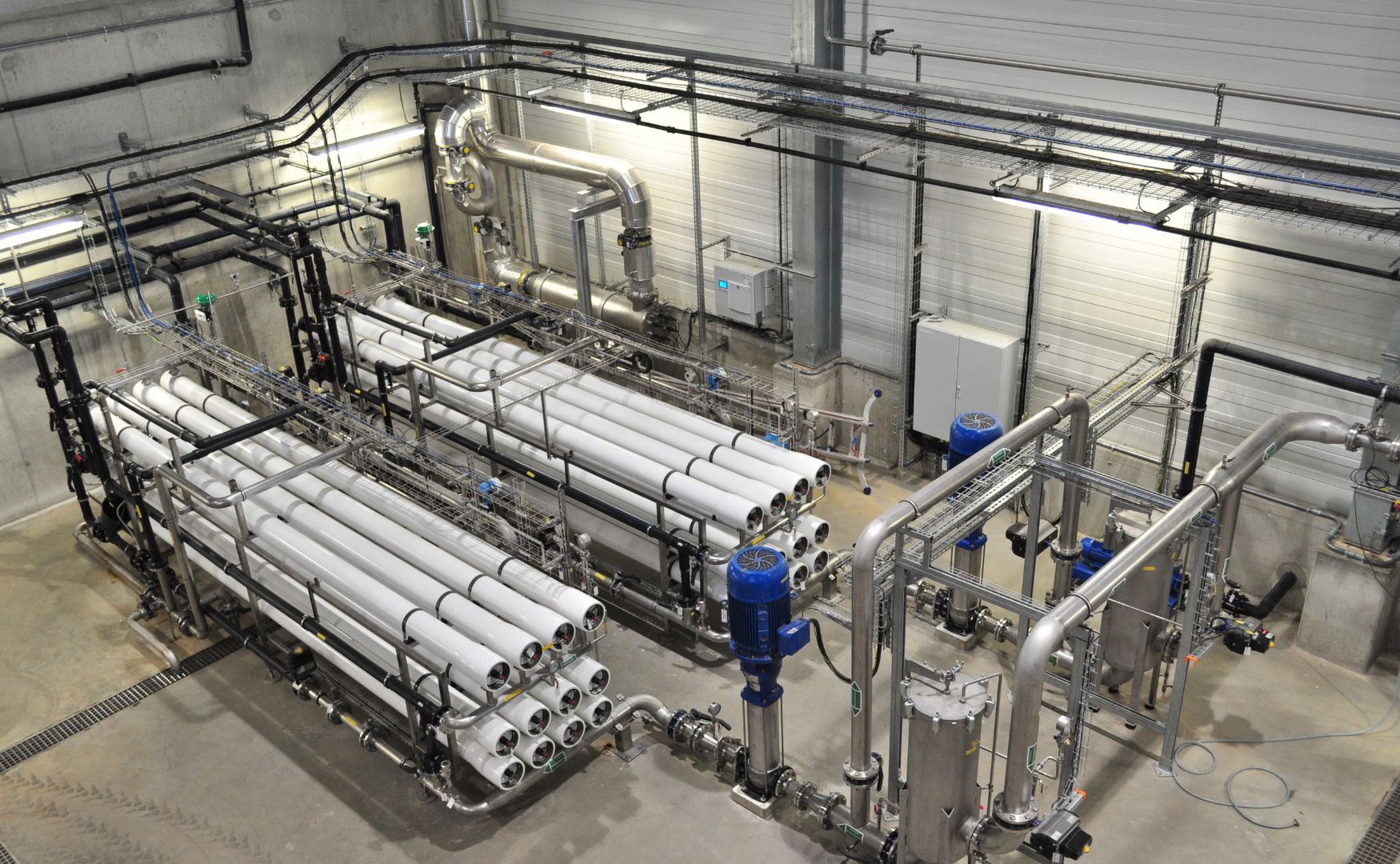
Photo: Our ALMA OSMO reverse osmosis system for in-house water recycling
Conclusion
The treatment of brewery wastewater requires a combination of energy-efficient and resource-saving technologies. Biogas plants offer an ideal solution for reducing COD and generating energy from organic loads. In addition, biofiltration and reverse osmosis enable effective water recycling, especially of vapor condensates, and contribute to the reduction of fresh water consumption. These technologies not only support compliance with legal requirements, but also promote sustainability and economic efficiency in the brewing industry.
For further information on our products, please feel free to contact us at any time!




